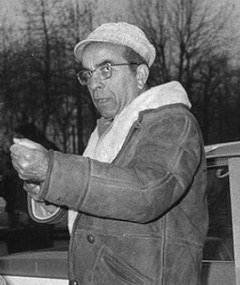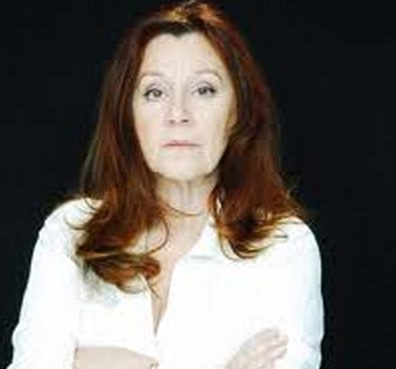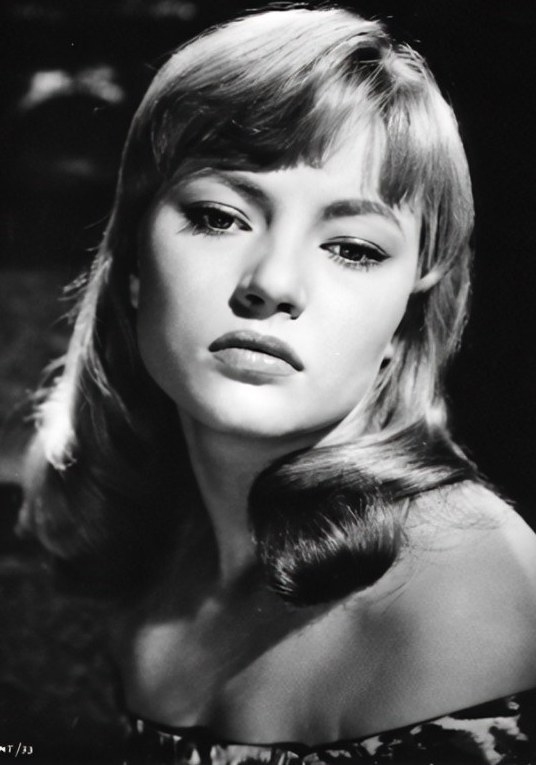索朗芝怎么了? Cosa avete fatto a Solange?(1972)

又名: What Have You Done to Solange?
编剧: Bruno Di Geronimo 马斯默·达拉马诺
上映日期: 1972-03-09
片长: 107分钟 IMDb: tt0068416 豆瓣评分:6.8 下载地址:迅雷下载
简介:
- 安瑞克(Fabio Testi 饰)是在圣玛丽女子学院就职的一名老师,虽然已经成家,但风流成性的安瑞克依旧和一位名叫伊丽莎白(克里斯蒂娜·伽尔博 Cristina Galbó 饰)的学生发生了不正当的关系。
演员:
影评:
- 【剧情介绍】:年轻帅气的安里柯是圣玛丽女子学院的一名老师,与妻子关系不和睦的他和同校的一名女生伊丽莎白有着不正常的师生恋关系,在一次湖上泛舟的浪漫幽会中,伊丽莎白目睹了一起残忍的凶杀,凶手用一把利剑无情了刺入一名年轻女孩的下体...而之后更令人意想不到的是,死者竟然也是圣玛丽学院的学生,而且凶手并没有就此罢手,成为了关键证人的伊丽莎白随即也成为了凶手的目标,而安里柯因为师生恋丑闻也成为了怀疑对象,被推倒了风口浪尖的他发誓要逮到凶手。随着案件的调查,一位叫做索朗芝的女孩也就成为了案件的关键人物......
如果说一次优秀的配乐是一部giallo电影的灵魂的话,那么出品于1972年的《索朗芝怎么了?》(What Have You Done to Solange?)一片无疑就已经成功了一半,现今的boss级配乐大师,Morricone总算摆脱掉了稍早为Argento的《Four Flies on Grey Velvet 》里那实验性却有失水准的配乐,那种凌厉但不突兀的配乐只有Goblin才能如此游刃有余,Morricone并不适合,但是延续了《Black Belly of the Tarantula》一片那“静若处子,动如脱兔”般的感觉,Morricone在本片里继续保持了那样一种妖娆之处有曼妙,动感之处有惊险的华丽感觉,无论是肉体场面中吟哦婀娜的女声还是追杀场面中快节奏的钢琴打击都与影片配合的恰到好处,因此本片的配乐也成为了70年代三大经典giallo配乐之一,另两部则是《Deep Red》以及《The Strange Vice of Mrs. Wardh》。
不过,一部电影最重要的当然还是需要给观众讲一个好故事,Massimo Dallamano无疑是一位非常有才华的导演,他涉猎过的题材也非常广泛,如意大利犯罪喜剧经典之作《Colt 38 Special Squad》就是其自编自导的作品,另外他也担任过经典西部片《荒野大镖客》的摄影师。所以《索朗芝》一片这次给大家带来的这个故事并不如传统giallo中那样有趣和生动,这部影片在一个看似凶险的谋杀故事背后实际上反映的是性解放运动之后,欧洲青少年中普遍存在的性滥交以及堕胎问题,所以如果说传统giallo里还是情杀,多财等老一套的话,《索朗芝》所表达的无疑是一个社会性悲剧,就如同影片的片名一样,这个反问无疑是对当时社会的一种反思和诘问。在看似暴力美学氛围内的谋杀场面中此次的行凶特点也颇为残忍,凶手喜欢用利器插入女性下体,并将凶器留在死者体内的手法即使是在当时就喜爱标新立异的giallo风格里也算相当大胆的尝试了。而片中凶手的真实身份也非常难猜,与简单的看了一半就能知道凶手身份的其它giallo电影相比,导演这次将几个嫌疑人的焦点安排的非常引人入胜,无论是男主角的妻子,还是偷窥成性的教授以及疑惑人心的神父形象,都将焦点安排的恰到好处。更何况影片里还有当年帅气逼人的男主角Fabio Testi,以及众多青春少女曼妙动人的肉体,露点场面毫不吝啬的本片,又一次印证着giallo电影成功的关键要素,“有血有肉”才是王道。至于本片名字的谜题所在,What Have They Done To Solange?他们到底对索朗芝做了什么呢?还得等您看后才能知晓。
============================================================================================================
本片中文字幕由LewArchie翻译:
本人亲自校对压制完成
DL: English Title: The Strange Vice of Mrs. Wardh
Original Title: Lo strano vizio della signora Wardh
Year: 1971
Country: Italy, Spain
Language: Italian, Spanish
Genre: Crime, Mystery, Horror
Director: Sergio Martino
Screenwriters: Eduardo Manzanos, Ernesto Gastaldi
Music: Nora Orlandi
Cinematography: Emilio Foriscot, Florian Trenker
Editor: Eugenio Alabiso
Cast:
Edwige Fenech
George Hilton
Ivan Rassimov
Alberto de Mendoza
Conchita Airoldi
Carlo Alighiero
Manuel Gil
Bruno Corazzari
Marella Corbi
Letizia Lehir
Anne Pouchie
Rating: 7.1/10

English Title: What Have You Done to Solange?
Original Title: Cosa avete fatto a Solange?
Year: 1972
Country: Italy, West Germany, UK
Language: Italian
Genre: Horror, Mystery, Thriller
Director: Massimo Dallamano
Screenwriters: Massimo Dallamano, Bruno Di Geronimo
Music: Ennio Morricone
Cinematography: Joe D’Amato
Editor: Antonio Siciliano
Cast:
Fabio Testi
Karin Baal
Cristina Galbó
Joachim Fuchsberger
Günther Stoll
Claudia Butenuth
Camille Keaton
Rainer Peukert
Pilar Castel
Giovanna Di Bernardo
Vittorio Fanfoni
Antonio Casale
Maria Michi
Maria Monti
Giancarlo Badessi
Rating: 6.3/10

English Title: The Psychic
Original Title: Sette note in nero
Year: 1977
Country: Italy
Language: English, Italian
Genre: Horror, Mystery, Thriller
Director: Lucio Fulci
Screenwriters: Lucio Fulci, Roberto Gianviti, Dardano Sacchetti
Music: Frano Bixio, Fabio Rizzi, Vince Tempera
Cinematography: Sergio Salvati
Editor: Ornella Michelli
Cast:
Jennifer O’Neill
Gabriele Ferretti
Marc Porel
Gianni Darko
Ida Galli
Jenny Tamburi
Fabrizio Jovine
Loredana Savelli
Bruno Corazzari
Rating: 7.0/10

A trio of Italian “giallo” pictures made in the 1970s, all enmeshed in lurid murders whose victims are exclusively the members of the weaker sex (mostly sylphlike, nubile girls), but each with their different kinks and kicks.
Sergio Martino’s THE STRANGE VICE OF MRS. WARDH finds the titular wife (Fenech, a porcelain-like trophy wife) of a diplomat harassed by mysterious letters and life-threatening attacks while any of the three men in her current life, her seemingly upstanding husband, her current, swarthy and caring paramour and a deranged, sadistic old flame, could be a serial killer offing young women with a blade.
The film’s final reveal would certainly throw audience for a loop. Although the twist is quite shark-jumping, it really goes out of its way to pinpoint a woman’s precariousness in this world, but that doesn’t hinder Mrs. Wardh from seeking out a possible new romantic object, sexual morality is something her and the film take a dim view of, above all, a woman’s extramarital affair is simply a mote in the eye of the oceanic masculine malignancy circling around her.
In Massimo Dallamano’s WHAT HAVE YOU DONE TO SOLANGE?, several sexually emancipated, pubescent schoolgirls in a London Catholic school are ruthlessly iced with a very startling modus operandi. The cases eventually turn out to be a personal vengeance with a conservative connotation. Here, our nominal protagonist is the school’s Italian professor Enrico Rosseni (Testi, who is in fine fettle but his amateur sleuth operation is half-baked), whose flagrant affair with Elisabeth (Galbó), one of his students, doesn’t get much flak besides the cold glare from his frigid German wife Herta (Baal).
When Enrico, and by extension, audience, finally sees daylight of the revenge act, the story’s punitive overtone of promiscuity-censuring and sadistic punishment cannot hide its sexist, even misogynic slant and disregard for reproductive justice, not to mention the hidebound, incorrigible hymen fixation (Enrico is easily forgiven for his peccadillo by Herta after Elisabeth is revealed to be a virgin). Dallamano vehemently nails his orthodox Catholic color to the mast but that notion is truly démodé half a century later.
Dissimilar to the aforementioned films, Lucio Fulci’s THE PSYCHIC (one of its many alternative titles is MURDER TO THE TUNE OF THE SEVEN BLACK NOTES) is rather chaste and barely blood-stained, with no exploitative sexual and nude contents, which is also uncharacteristic for him, after all, he is famously dubbed as “the poet of macabre”.
Riding on a high-concept construct of parapsychology, about a woman (O’Neill) who can foresee events happened in near future, only too late to realize that they are the components of a dreadful situation where her own life will be put in extremis, THE PSYCHIC is a taut Hitchcockian thriller and mystery, vigorously piecing together all the puzzles of a predestined climax, and suffixed with an open-end coda, leaving the fate of our hapless heroine a moot point. A case of saving by the music, but not a complete victory, as fanciful as MRS. WARDH.
All three pictures are reined by competent hands despite their moderate-to-scanty funds. MRS. WARDH seems to be spurred by Martino’s somewhat hog-wild energy, brandishing slapdash compositions and punch-drunk cuts as if in a delirium. It also tries to creep audience out with a sinister POV and an eldritch ambience of a slasher (including emulating a notorious a slashing scene in the bathroom).
The similar technique also appears in SOLANGE, where Gothic oppression, Catholic formality and idyllic lushness all gel into a rigid whodunit, while treacherously belying the transgressions and profligacy underfoot. The sadistic commission can hardly match the black-and-white flashback sequence which could be an adolescent girl’s worst nightmare.
Fulci’s psychotronic pyrotechnics in image-confecting and myth-fabrication are well served in THE PSYCHIC. The neatness of its narrative procedure elicits a wonderful adrenaline rush through Fulci’s time-honed proficiency and savvy in the trade, only the periodic zooming-in close-ups of Jennifer O'Neill’s soulful, spacey eyes to segue into her eerie vision is woefully deployed ad nauseam.
As per in the genre’s idiom, the dialogues in all three films are crummily composed, merely to thuddingly implement their function as plot propellers. Apart from distinctive visual finesse, a good giallo’s best bedfellow is a killer score, and that’s something the trio isn’t shy of. Nora Orlandi, the first female film composer of Italian cinema, confidently dazzles and seduces audience with her strangely alarming and discordant accompaniment in MRS. WARDH; whereas Morricone’s contribution to SOLANGE is alternately lyrical and unsettling, the titular tune is particularly mellifluous and melancholic; as for THE PSYCHIC, its score is also quite untypical, preferring a more melodious, otherworldly atmosphere than the usual suspect as a routine mood enhancer.
At the end of the day, for all their gratifying demerits and logical lacunae, each film makes for a gripping first-viewing. For an erstwhile genre mainly regarded as a purveyor of divertissement, it still remains a mother lode of perversion, delectation and thrill for an audience of new generations to discover.
referential entries: Dario Argento’s SUSPIRIA (1977, 7.3/10), THE BIRD WITH THE CRYSTAL PLUME (1970, 6.1/10); Yann Gonzalez’s KNIFE + HEART (2018, 7.7/10); Mario Bava’s BLACK SUNDAY (1960, 7.3/10); Ti West’s X (2022, 6.2/10); Peter Strickland’s THE DUKE OF BURGUNDY (2014, 8.0/10).





